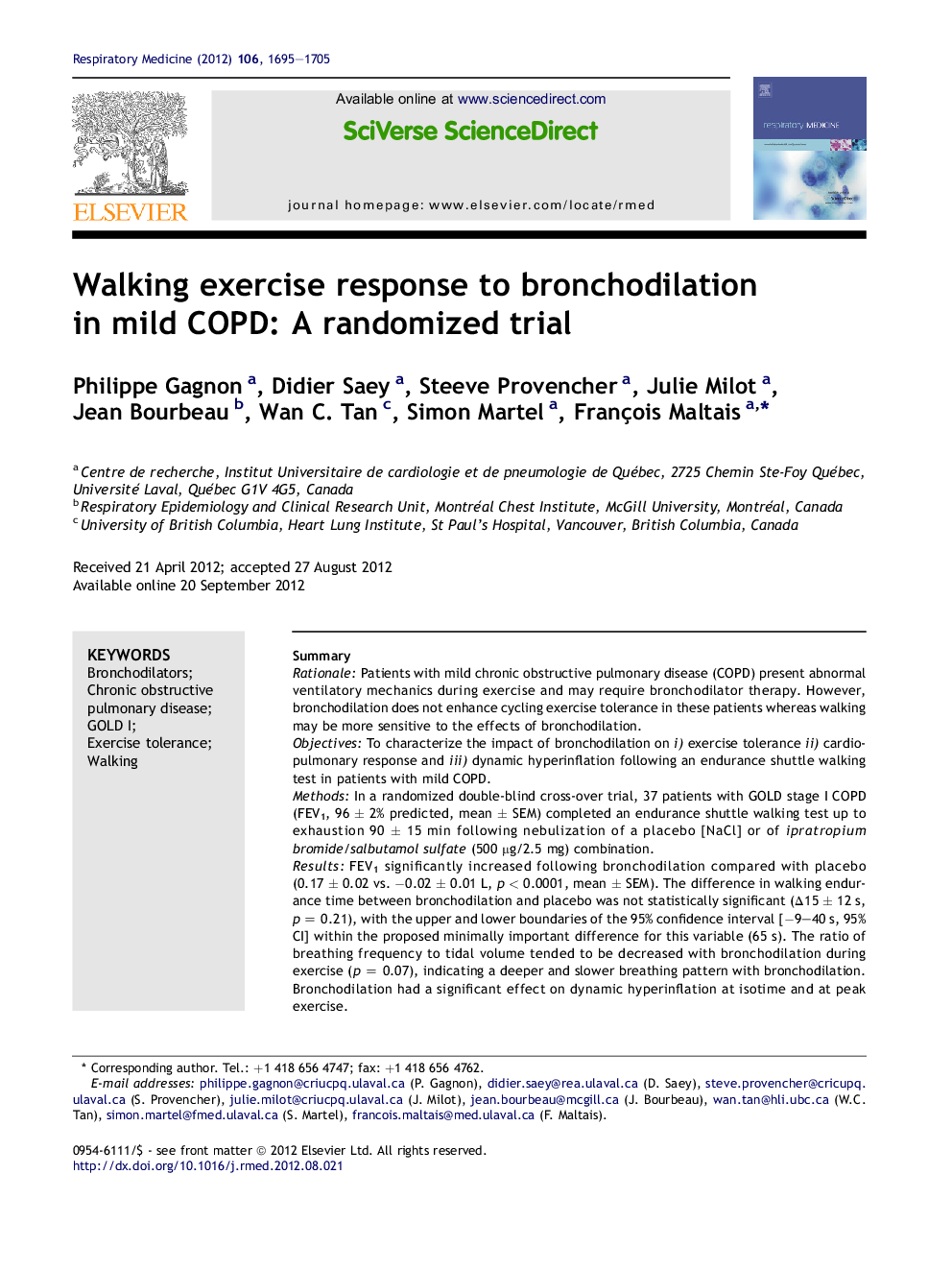| Article ID | Journal | Published Year | Pages | File Type |
|---|---|---|---|---|
| 4210216 | Respiratory Medicine | 2012 | 11 Pages |
SummaryRationalePatients with mild chronic obstructive pulmonary disease (COPD) present abnormal ventilatory mechanics during exercise and may require bronchodilator therapy. However, bronchodilation does not enhance cycling exercise tolerance in these patients whereas walking may be more sensitive to the effects of bronchodilation.ObjectivesTo characterize the impact of bronchodilation on i) exercise tolerance ii) cardiopulmonary response and iii) dynamic hyperinflation following an endurance shuttle walking test in patients with mild COPD.MethodsIn a randomized double-blind cross-over trial, 37 patients with GOLD stage I COPD (FEV1, 96 ± 2% predicted, mean ± SEM) completed an endurance shuttle walking test up to exhaustion 90 ± 15 min following nebulization of a placebo [NaCl] or of ipratropium bromide/salbutamol sulfate (500 μg/2.5 mg) combination.ResultsFEV1 significantly increased following bronchodilation compared with placebo (0.17 ± 0.02 vs. −0.02 ± 0.01 L, p < 0.0001, mean ± SEM). The difference in walking endurance time between bronchodilation and placebo was not statistically significant (Δ15 ± 12 s, p = 0.21), with the upper and lower boundaries of the 95% confidence interval [−9–40 s, 95% CI] within the proposed minimally important difference for this variable (65 s). The ratio of breathing frequency to tidal volume tended to be decreased with bronchodilation during exercise (p = 0.07), indicating a deeper and slower breathing pattern with bronchodilation. Bronchodilation had a significant effect on dynamic hyperinflation at isotime and at peak exercise.ConclusionBronchodilation did not improve walking endurance in patients with mild COPD despite small physiological benefits of uncertain clinical relevance.
